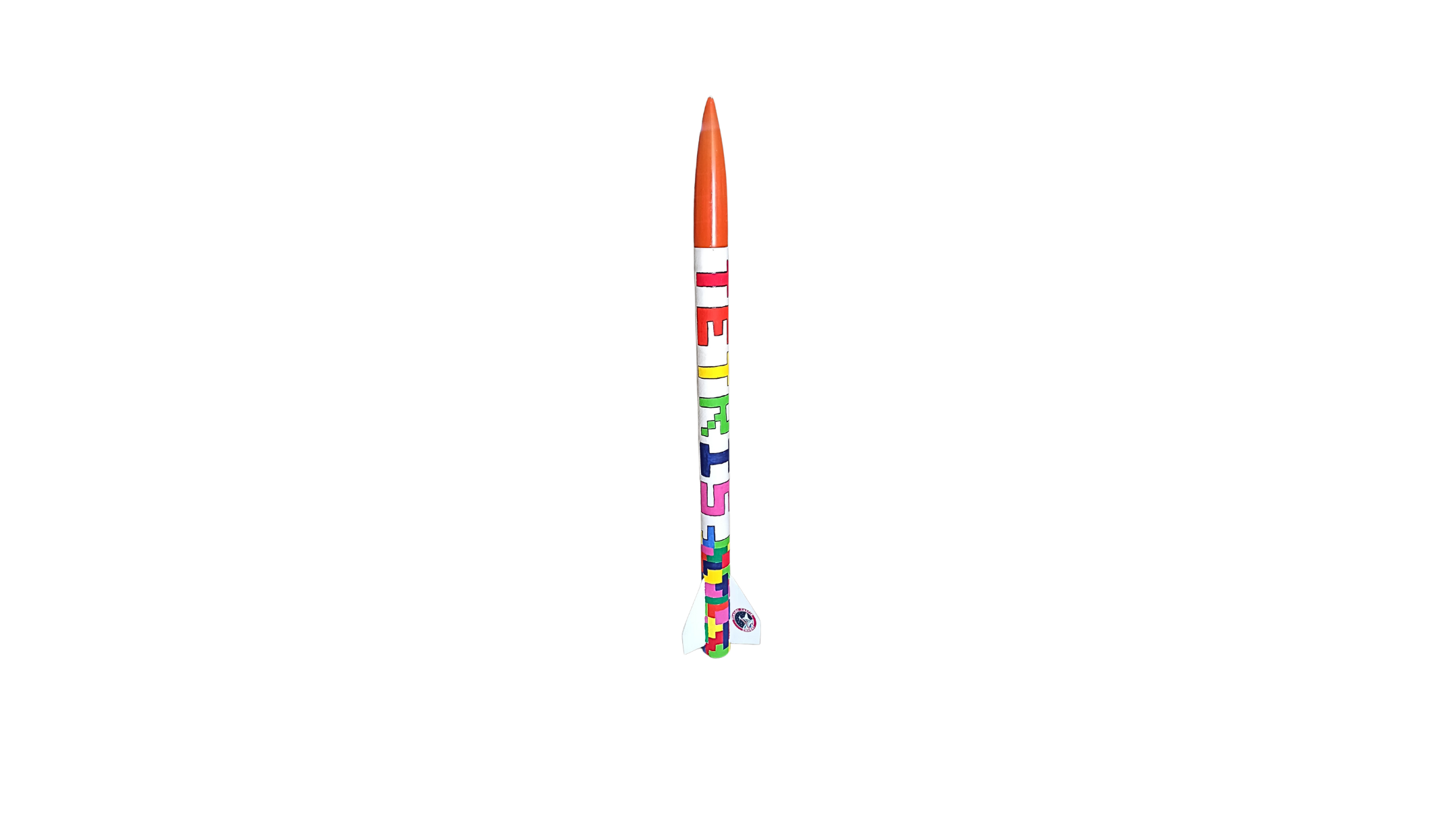Design, construction and launch of experimental rocket: Tetris
DOI:
https://doi.org/10.37636/recit.v7n2e344Keywords:
Experimental rocket, Fiberglass, ManufacturingAbstract
Since the launch of Sputnik in the 1950s, scale rockets began to be used around the world so that people interested in the space sector had access both in terms of cost, safety and manufacturing. At the facilities of the Autonomous University of Baja California (UABC), a project to design, build and launch the experimental rocket called Tetris was developed. For its design, the Openrocket Software was used, and its components are: the warhead, fuselage, 3 trapezoidal fins, a parachute attached to the rocket structure and the warhead, the type I-J engines and a CanSat-type satellite with parachutes as Useful load. Tetris was built with fiberglass material in the Aerospace Engineering laboratories of FCITEC-UABC. Two launches were successfully carried out at the Laguna Salada facilities located in the state of Baja California, one carrying a can with stones as a weight as a payload and the other launch containing a CanSat. The maximum height reached by the rocket was 595.8 m a.s.l. (meters above sea level) in a time of 10 s, from an initial platform placed at 16 m a.s.l. The main interest in doing these projects lies in manipulating new materials, innovating the techniques used in manufacturing and, above all, acquiring experience to in the future begin the space age in Mexico as it was in the 60s and 70s.
Downloads
References
L. T. DeLuca, Highlights of Solid Rocket Propulsion History, Springer, 2016. DOI: https://doi.org/10.1007/978-3-319-27748-6_42
A. S. Mohamed, «How Rockets Work,» Omdurman Ahlia University, 2022.
T. Benson, «NASA,» 13 mayo 2021. [En línea]. Available: https://www.grc.nasa.gov/www/k-12/TRC/Rockets/history_of_rockets.html#:~:text=The%20date%20reporting%20the%20first,of%20a%20solid%2Dpropellant%20rocket.
S. May, «NASA,» 7 agosto 2017. [En línea]. Available: https://www.nasa.gov/audience/forstudents/k-4/stories/nasa-knows/what-is-a-rocket-k4.html.
J. D. Clark, Ignition, New Jersey: Rutgers University Press, 1972.
P. Estey, D. Altman y J. Mcfarlane, «An evaluation of scaling effects for hybrid rocket motors,» Aeroespacial Research Center, 2012.
G. P. Sutton, Rocket propulsion elements, Wiley, 2017.
A. Urrego, F. Rojas, «Experimental Rocketry missions: the seneca mission, ainkaa 1 rocket» Julio 2010. Pag. 54-55
"Brief History of Rockets". [En linea]. Available:
https://www.grc.nasa.gov/www/k-12/TRC/Rockets/history_of_rockets.html
Mendoza, J. R. (2010). Cabo Tuna "Una aventura espacial en San Luis Potosí". San Luis Potosí: Museo de la Historia de la Ciencia de San Luis Potosí.
AEM, «Ingeniería de Sistemas Espaciales Aplicado a una misión CanSat,» México, 2015.
"Cansat Argentina". [En linea]. Available:
https://www.argentina.gob.ar/ciencia/sact/cansat-argentina
"Nozzle design". [En linea]. Available:
https://www.grc.nasa.gov/www/k-12/rocket/nozzle.html
M. Vargas y E. Coronado, «Reacciones de combustión con propelentes sólidos en motores de cohetes experimentales,» Scielo, vol. 28, nº 2, 2011.
J. Ma, «Analysis of the characteristics of rocket propellant,» Theoretical and Natural Science, pp. 490-495, 2023. DOI: https://doi.org/10.54254/2753-8818/5/20230296
R. Nakka, Teoría sobre motores cohete de propelente sólido, 2005
R. S. P. Shu y W. Foster, Vortex shedding from solid rocket propellant inhibitors, 2012.
R. Thapa y S. Robert, «Evolution in Propellant of the Rocket Engine,» Journal of Materials Physics and Chemistry, 2023. DOI: https://doi.org/10.12691/jmpc-11-1-2
S. A. Morales, Fibra de virdrio, pruebas y aplicaciones, México: IPN, 2008.
A. Jiménez, Diseño y simulación de un cohete con carburante sólido, Bogotá: Universidad de los Andes, 2003.
P. A. Arizpe, Construcción de Vehículos y Motores Cohete, México, 2022.
R. Robayo, J. Portocarrero, J. Meneses, J. Salgado, S. Martínez, F. Delgado y A. Gómez, «Diseño, construcción y prueba estática experimental de un motor-cohete de combustible sólido,» Revista UIS Ingenierías, 2021.
R. Bouché y A. Ghiotto, «Dual-Band Transmitter and Stabilization Blade Antenna for Experimental Rocket Telemetry Application,» IEEE, 2016.
https://www.tripoli.org/(visto el 13th Feb. 2023).
"Propiedades de la fibra de vidrio" 09 junio 2019. [En línea]. Available:
https://serveiestacio.com/blog/propiedades-de-la-fibra-de-vidrio/
"Guía básica de cintas tubulares - Pezzutti" 12 enero 2022. [En linea]. Available:
https://www.pezzuttitrade.pe/consejos/guia-basica-de-cintas-tubulares/
"¿Cuál es el mejor adhesivo epóxico?" Cemix, 2023. [En línea]. Available:
https://www.cemix.com/adhesivo-epoxico-como-aplicarlo/
"Open Rocket”. [En línea]. Available:
G. González, I. Hernández, B. Orozco y E. Castillo, «Estudio y diseño de Alas para Cohetes Experimentales Amateur», Noche de estrellas, agosto 2019
Unidad de difusión de la Universidad de Guadalajara, «Cohetería experimental, opción para el desarrollo de emprendimiento»
M. Damirchi, "Interfaz del módulo GPS NEO-7M con Arduino". [En línea]. Available:
https://electropeak.com/learn/interfacing-neo-7m-gps-module-with-arduino/
"Tarjeta GY-91” [En línea]. Available: https://electronilab.co/tienda/tarjeta-gy-80-imu-10dof/
"Sensor de gas BME680”. [En línea]. Available: https://www.bosch-sensortec.com/products/environmental-sensors/gas-sensors/bme680/
"Aerotech I175WS-13A Motor de cohete súper blanco Lightning DMS”. [En línea]. Available: https://www.csrocketry.com/rocket-motors/aerotechrocketry/motors/38mm/dms-rocket-motors/aerotech-i175ws-13a-super-white-lightning-dms-rocket-motor.html

Published
How to Cite
Issue
Section
Categories
License
Copyright (c) 2024 Liliana Lucero Vargas Oseguera, Diana Gabriela Bejarano Toloza, Antonio Gómez Roa, Oscar Adrián Morales Contreras, Oscar Abraham Solano Santos

This work is licensed under a Creative Commons Attribution 4.0 International License.
The authors who publish in this journal accept the following conditions:
The authors retain the copyright and assign to the journal the right of the first publication, with the work registered with the Creative Commons Attribution license 4.0, which allows third parties to use what is published as long as they mention the authorship of the work and the first publication in this magazine.
Authors may make other independent and additional contractual agreements for the non-exclusive distribution of the version of the article published in this journal (eg, include it in an institutional repository or publish it in a book) as long as they clearly indicate that the work it was first published in this magazine.
Authors are allowed and encouraged to share their work online (for example: in institutional repositories or personal web pages) before and during the manuscript submission process, as it can lead to productive exchanges, greater and more quick citation of published work (see The Effect of Open Access).











